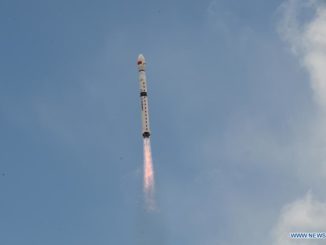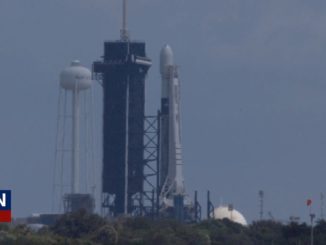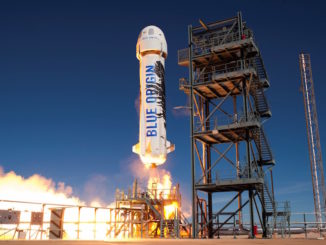EDITOR’S NOTE: Updated Dec. 17 after the first launch attempt was scrubbed.
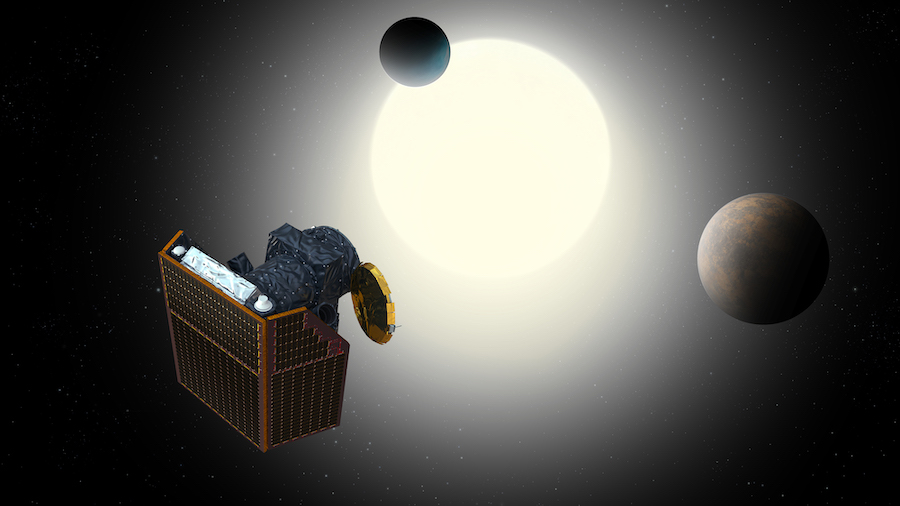
A compact exoplanet observatory built in Europe to help astronomers determine the sizes of distant worlds around other stars is scheduled for launch Wednesday from French Guiana aboard a Soyuz rocket.
Designed to build upon discoveries made by previous pioneering exoplanet telescopes — like NASA’s Kepler mission — the European Space Agency’s Characterizing Exoplanet Satellite, or CHEOPS, mission will orbit some 435 miles (700 kilometers) above Earth with a small but ultra-sensitive telescope looking at faraway stars.
CHEOPS will be capable of registering tiny changes in the brightness of stars as planets block their light from reaching the telescope. This way of observing exoplanets is called the transit method, and it’s been used by Kepler, NASA’s TESS observatory, and the French space agency’s CoRoT mission to discover planets around other stars.
Astronomers designed CHEOPS to follow up on discoveries made by other telescopes.
“What makes CHEOPS quite special to all the other transit missions so far is that CHEOPS is not really a discovery mission,” said Willy Benz, the mission’s principal investigator from the University of Bern in Switzerland. “It’s a follow-up. We will be looking at one system at a time, and not trying to discover thousands of others.”
“The idea is that we know now several thousands of these exoplanets,” Benz said. “We are more interested slowly toward characterizing them with precision, knowing what they’re made of and their temperature, and so on and so forth.”
Astronomers can determine the mass of an exoplanet through a technique called the radial velocity method, in which telescopes can detect the wobble of a star caused by the pull of gravity from a smaller planetary companion. The amplitude of the wobble can tell scientists about the planet’s mass.
Combining the size information from CHEOPS with mass estimates obtained through other telescopes can yield significant insights into exoplanets, Benz said.
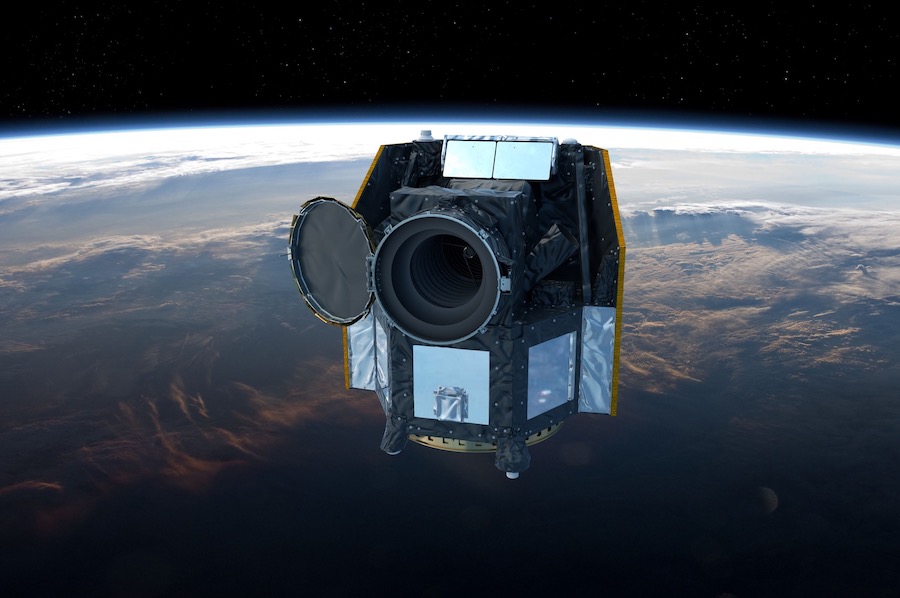
“By measuring the radius and by knowing the mass through radial velocity, we can place these different planets and try to figure out what they’re made of, whether they’re rocky planets, whether they’re a gas ball, an icy world, or the like,” he said. “You need to have pretty small error bars if you want to say anything meaningful about this, and this is why we need precision measurements.”
CHEOPS can help identify prime targets for additional observations by future missions, such as the James Webb Space Telescope scheduled for launch in 2021.
“We want to look at atmospheres, following planets in their orbits around the star, we may want to see if a planet has moons, rings, and so on, and we want to provide the best targets for the very large facilities under construction or going into orbit like JWST,” Benz said.
David Ehrenreich, mission scientist for the CHEOPS consortium at the University of Geneva, said future large telescopes likes JWST and the Extremely Large Telescope in Chile will be under high demand.
“We think that in the coming years there will be far too many very interesting small planets to characterize with powerful facilties than observing time available on these over-booked facilities,” Ehrenreich said. “So it will become extremely important to down-select the golden target — the very best of these targets — so we could go and spend a lot of time with Hubble, with James Webb, and with the ELT on the ground.
“CHEOPS is going to be a key in this process by confirming and obtaining the first step characterization of these many targets, and determining which one we should look for,” Ehrenreich said.
ESA’s new exoplanet telescope will observe about 300 targets during its three-and-a-half-year primary mission, according to Ehrenreich.
CHEOPS is small. It stands 4.9 feet (1.5 meters) tall and stretches 5.2 feet (1.6 meters) wide, with a fixed solar array to generate electricity. The satellite was built in Spain by Airbus Defense and Space and weighs 601 pounds (273 kilograms), according to the mission’s press kit.
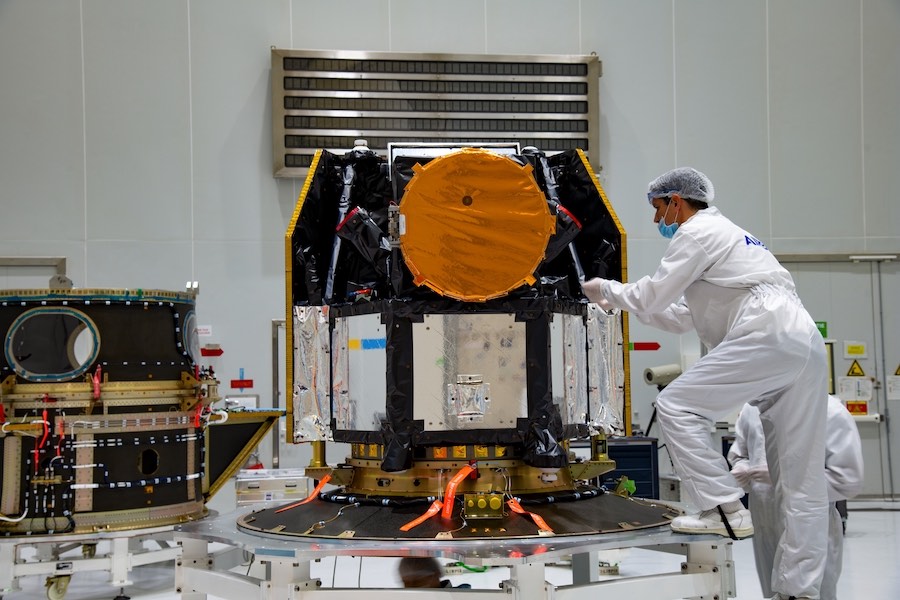
The budget for the CHEOPS mission is also relatively modest, barely rising above the $110 million (100 million-euro) mark. ESA funded about half the mission’s cost, including the procurement of the spacecraft bus and launch services. A consortium of 11 European nations, led by Switzerland and Spain, contributed funding for the rest of the mission’s cost.
ESA selected CHEOPS as the agency’s first S-class, or small, science mission in 2012. The S-class missions join a roster of more expensive medium and large missions in ESA’s space science portfolio.
“It’s a mission to deliver world-class exoplanet science, and specifically what we’re doing is measuring sizes of known exoplanets using the techniques of high-precision transit photometry,” said Kate Isaak, CHEOPS project scientist at ESA.
“It follows on from CoRoT, from Kepler and from TESS, and it’s the first in a series of three missions from ESA that are dedicated to exoplanet science,” Isaak said. “CHEOPS will provide us with key information to understand the structure of small planets, and how they form and evolve. This will be an essential step in a worldwide endeavor … to search for exoplanets like our own Earth.”
The choice of a low-altitude orbit for CHEOPS helped save money, officials said.
“Being in a low Earth orbit has the advantage that it’s relatively cheap,” Benz said. “It doesn’t require too much fancy communication, but it has disadvantages. The Earth hides part of the sky. You’re flying through radiation belts, which cause problems in your electronics and in your detectors.”
CHEOPS will fly in an orbit that hugs the terminator, or the boundary between the day and night sides of Earth.
“The idea is to always observe stars that are located over the dark side of the Earth,” Benz said.
CHEOPS hosts a 12-inch (30-centimeter) telescope designed to help astronomers measure the sizes of planets orbiting other stars. “You may wonder what’s the big fuss in a 30-centimeter telescope. You can almost buy it in a supermarket,” Benz said.
The CHEOPS telescope is tuned to detect faint changes in light, with optics designed to eliminate stray light from Earth, the moon, and other bright nearby objects.
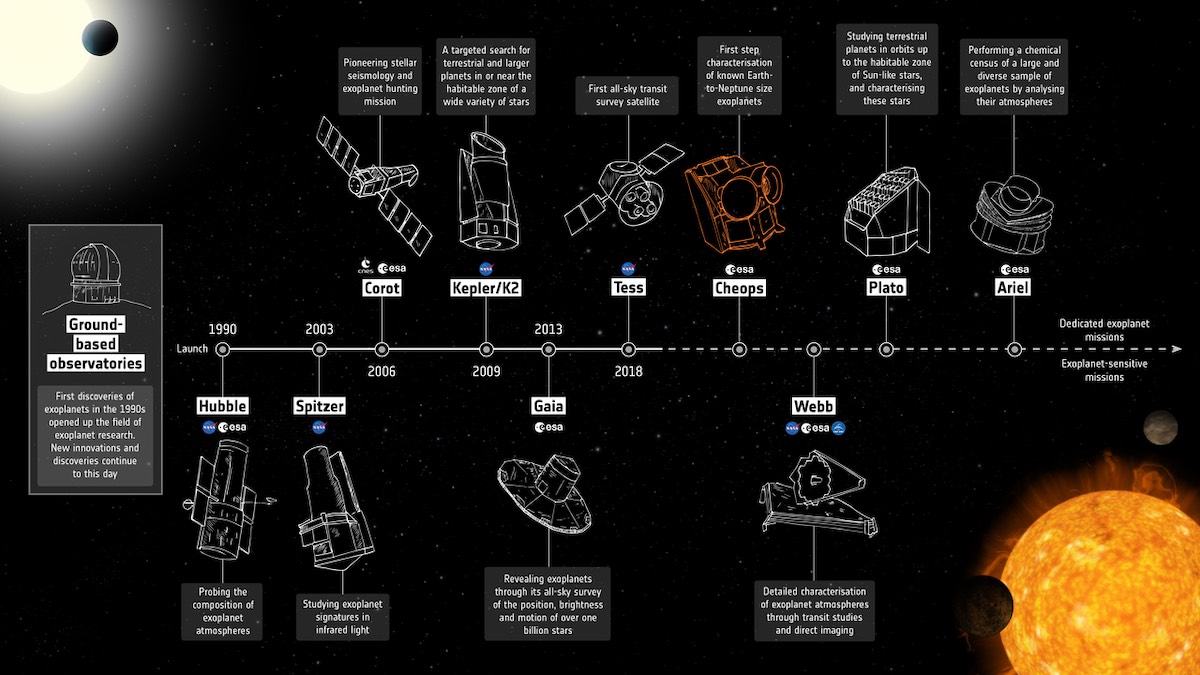
The sensitivity of the CHEOPS telescope — with optics from Italy, a focal plane module from Germany, detectors from the United Kingdom, and a baffle and cover assembly from Belgium — will allow astronomers to measure the sizes of exoplanets as small Earth, according to Benz.
“If an Earth passes in front of the sun, as seen from a distance, you will see 100 ppm, 100 parts per million change in the light,” Benz said. “If Jupiter is passing, you will see 1 percent, so it’s much bigger. This is .01 percent … You need to go to space to see these kinds of changes. It’s the amplitude of these changes in the light that determines then how accurate your mission has to measure the light.”
With multiple observations of the same transiting planet, CHEOPS could measure the size an exoplanet with a precision of 10 percent, according to Ravit Helled, a CHEOPS contributor from the University of Zurich.
Astronomers are particularly interested in a class of exoplanets bigger than Earth but smaller than Neptune.
“There is a large population of exoplanets of intermediate masses and radii, and they are very common in the galaxy,” Helled said. “And these are planets that we don’t know how to characterize so much … With CHEOPS, we will be able to hopefully characterize more of these intermediate-class planets.”
CHEOPS is buttoned up for launch on top of a Russian Soyuz ST-A booster at the Guiana Space Center, located in the northeastern coast of South America. The ESA science mission is set to ride into orbit with Italy’s first COSMO-SkyMed Second Generation, or CSG 1, radar surveillance satellite, and three CubeSats.
There is an instantaneous launch opportunity available Wednesday at 0854:20 GMT (3:54:20 a.m. EST; 5:54:20 a.m. French Guiana time). A launch attempt Tuesday was scrubbed due to a software concern with the launch vehicle, according to ESA officials.
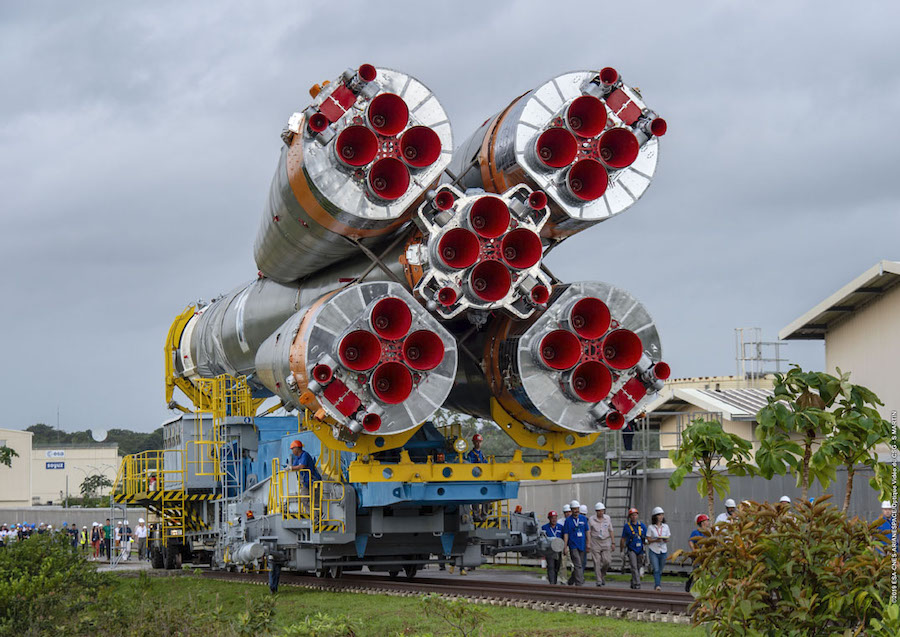
The Soyuz ST-A rocket, with the help of a Fregat upper stage, will deliver the mission’s five satellite payloads into three different polar orbits on Wednesday’s flight, according to Arianespace, which oversees Soyuz launch operations in French Guiana.
Burning kerosene and liquid oxygen, the Soyuz ST-A will head north from the European-run spaceport in South America and drop its four liquid-fueled boosters into the Atlantic Ocean around two minutes after liftoff.
The Soyuz rocket’s payload shroud will jettison at T+plus 3 minutes, 16 seconds, followed by shutdown and separation of the Soyuz core stage at T+plus 4 minutes, 47 seconds. The third stage’s RD-0110 engine will fire for about four minutes, then the Soyuz rocket’s Fregat upper stage will separate to begin a lengthy series of six burns to inject five satellites into three distinct orbits.
The first Fregat engine firing will last a little more than 10 minutes to place the CSG 1 radar surveillance satellite into a 384-mile-high (619-kilometer) sun-synchronous orbit inclined 97.8 degrees to the equator.
The 4,861-pound (2,205-kilogram) CSG 1 satellite, manufactured by Thales Alenia Space, will separate from the top of the Fregat upper stage at 0917 GMT (4:17 a.m. EST), or at T+plus 22 minutes, 43 seconds.
The CSG 1 spacecraft carries a radar instrument designed to observe Earth during day and night passes, capturing imagery with a resolution better than a meter, or about 3.3 feet. CSG 1 is the first of two new second-generation Italian radar observation satellites ensure no data gaps from Cosmo-SkyMed fleet as the four first-generation satellites move beyond their original five-year design lives.
The Cosmo-SkyMed system’s first four satellites launched from California on United Launch Alliance Delta 2 rockets from 2007 through 2010.
The Cosmo-SkyMed radar reconnaissance network, intended for military and civilian use, is funded by the Italian Space Agency, the Italian Ministry of Defense and the Italian Ministry of Education, University and Research.
Three more Fregat engine firings over the next two hours — along with the separation of the top of the Fregat’s multi-payload adapter structure — will set up for separation of the CHEOPS payload at T+plus 2 hours, 24 minutes, 41 seconds, or at 1119 GMT (6:19 a.m. EST).
CHEOPS will deploy from the Fregat stage in a 435-mile-high (700-kilometer) orbit with an inclination of 98.2 degrees.
Two more engine burns will position the Fregat upper stage in a lower 310-mile-high (500-kilometer) sun-synchronous orbit for separation of the mission’s other three secondary payloads. The three CubeSats are scheduled to be separated from the Fregat stage by 1307 GMT (8:07 a.m. EST).
Email the author.
Follow Stephen Clark on Twitter: @StephenClark1.

